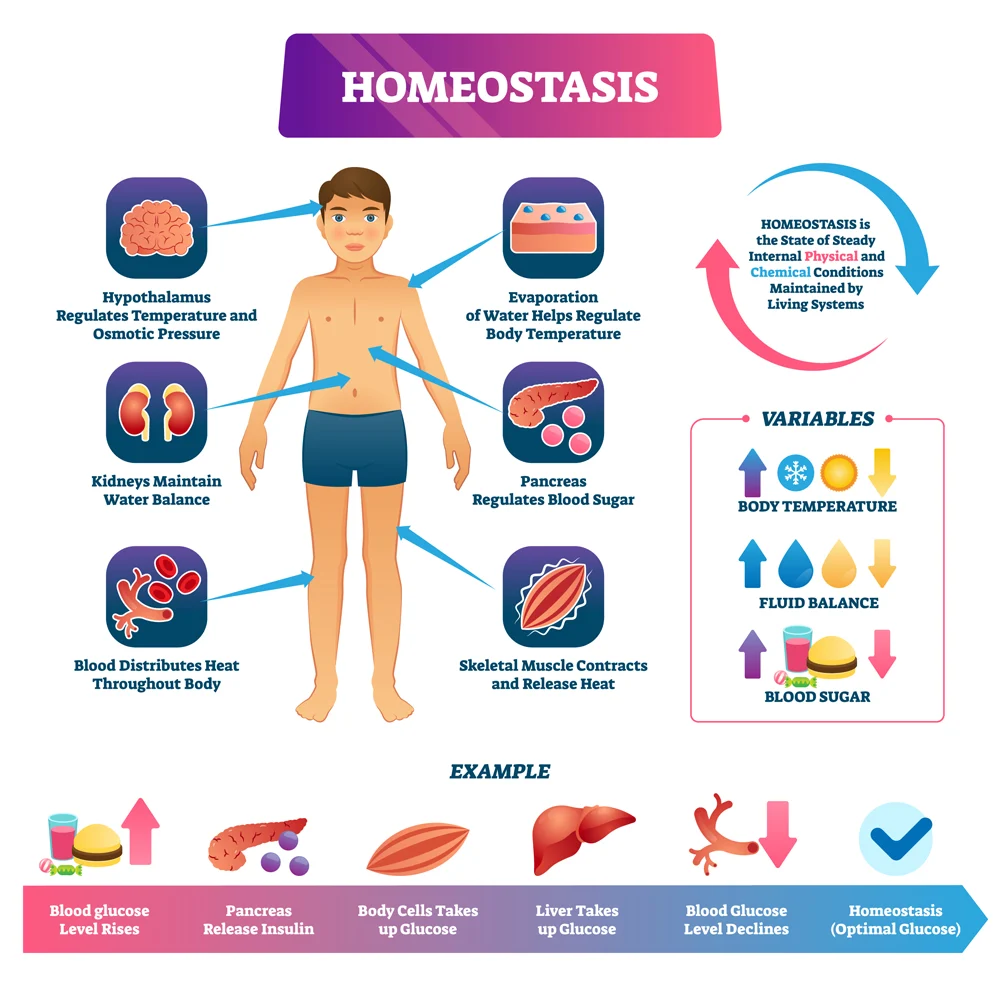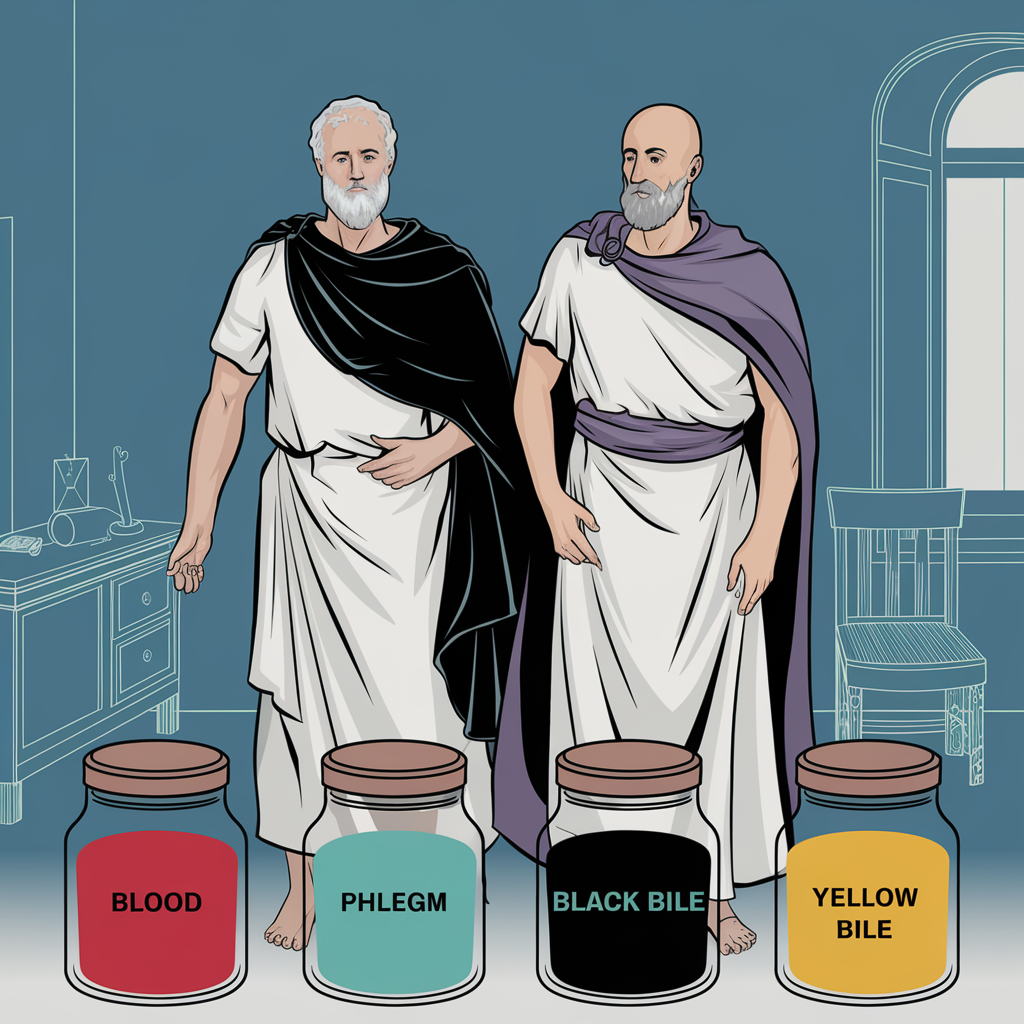Introduction
Homeostasis, the body’s ability to maintain a stable internal environment, is essential for optimal health and well-being. This concept of balance dates back to ancient Greek medicine and remains a key principle in modern science. In this article, we’ll explore the evolution of homeostasis from its historical roots to its current understanding, along with diagnostic methods used to assess imbalances.
Historical Background of Homeostasis
The idea of balance in the body originated in ancient Greece, especially through the teachings of Asclepius, the god of healing. These early foundations shaped Greek medical thought, where balance was central to health. Physicians like Hippocrates and later Galen expanded on this idea with the doctrine of the four humors—blood, phlegm, yellow bile, and black bile. They believed that health depended on the balance of these fluids, and any imbalance resulted in disease.
Fast forward to modern science, and this ancient concept of balance has evolved into the principle of homeostasis, coined by 20th-century physiologist Walter Cannon. While the Greeks viewed balance in terms of humoral fluids, modern medicine understands it as the body’s ability to regulate physiological parameters like body temperature, pH, and glucose levels.
Homeostatic Balance: Key Mechanisms
The body maintains internal balance through several homeostatic processes:

1.Thermoregulation
Thermoregulation controls body temperature to ensure proper metabolic and enzymatic activity. The hypothalamus acts as the body’s thermostat. When body temperature rises, mechanisms like sweating and vasodilation help cool the body. Conversely, when it drops, shivering and vasoconstriction generate heat to restore balance.
2.Osmoregulation
Osmoregulation manages the balance of water and electrolytes, crucial for fluid equilibrium. The kidneys play a central role, filtering blood and regulating water retention or excretion. Hormones like ADH (antidiuretic hormone) and aldosterone regulate water and electrolyte levels. For instance, during dehydration, ADH increases water reabsorption, while during overhydration, it decreases.
3.Chemical Regulation (Blood Glucose Control)
Blood glucose regulation ensures cells have a steady supply of energy. After eating, the pancreas secretes insulin, which lowers blood glucose levels by promoting its storage in the liver. When blood sugar is low, glucagon triggers the breakdown of stored glycogen, raising glucose levels.
Diagnosing Imbalances in Homeostasis
Identifying homeostatic imbalances involves assessing various physiological systems. Here are key diagnostic methods:
1.Clinical Symptoms
Doctors observe symptoms such as:
- Dehydration (dry mouth, dizziness) or overhydration (swelling, nausea)
- Fatigue or weight changes, which may signal glucose or electrolyte imbalances
2.Vital Signs Monitoring
Monitoring vital signs, like body temperature and blood pressure, can reveal issues with thermoregulation and cardiovascular balance. For example, fever or hypothermia indicates problems with temperature control, while hypertension or hypotension may reflect fluid imbalances.
3.Blood Tests
Blood tests provide insights into several homeostatic processes:
- Glucose levels: To detect imbalances in blood sugar regulation (e.g., diabetes)
- Electrolyte levels: Imbalances, such as high potassium (hyperkalemia) or low sodium (hyponatremia), suggest issues with kidney or hormonal regulation.
- pH balance: Blood gas tests help diagnose acid-base imbalances like acidosis or alkalosis.
4.Urinalysis
A urine test assesses kidney function:
- Concentration and volume: Indicates osmoregulatory function.
- Presence of glucose or protein in urine signals possible kidney damage or metabolic disorders.
5.Imaging Studies
Imaging, like ultrasounds or MRIs, can identify structural problems:
- Kidneys: Detects blockages or kidney stones impacting fluid regulation.
- Endocrine glands: Identifies abnormalities in glands that regulate hormones, such as the thyroid or pancreas.
6.Hormonal Tests
Hormonal imbalances can disrupt homeostasis:
- Thyroid hormones: Affect metabolism and thermoregulation.
- Cortisol and aldosterone: Control stress responses and water balance.
- ADH: Regulates water retention and can point to issues like diabetes insipidus.
7.Electrocardiogram (ECG)
An ECG measures heart rhythm, often linked to electrolyte imbalances that disrupt cardiovascular homeostasis.
8.Respiratory Function Tests
Pulmonary tests assess lung function and detect conditions like COPD or asthma, which can impact oxygen and pH regulation.
Conclusion
From its ancient Greek origins to modern medical science, the concept of balance in the body, homeostasis, remains central to understanding health. Diagnosing and treating homeostatic imbalances are key to preventing diseases and maintaining well-being. By leveraging advanced diagnostic techniques, healthcare professionals can better manage and restore the body’s equilibrium, ensuring optimal health.





